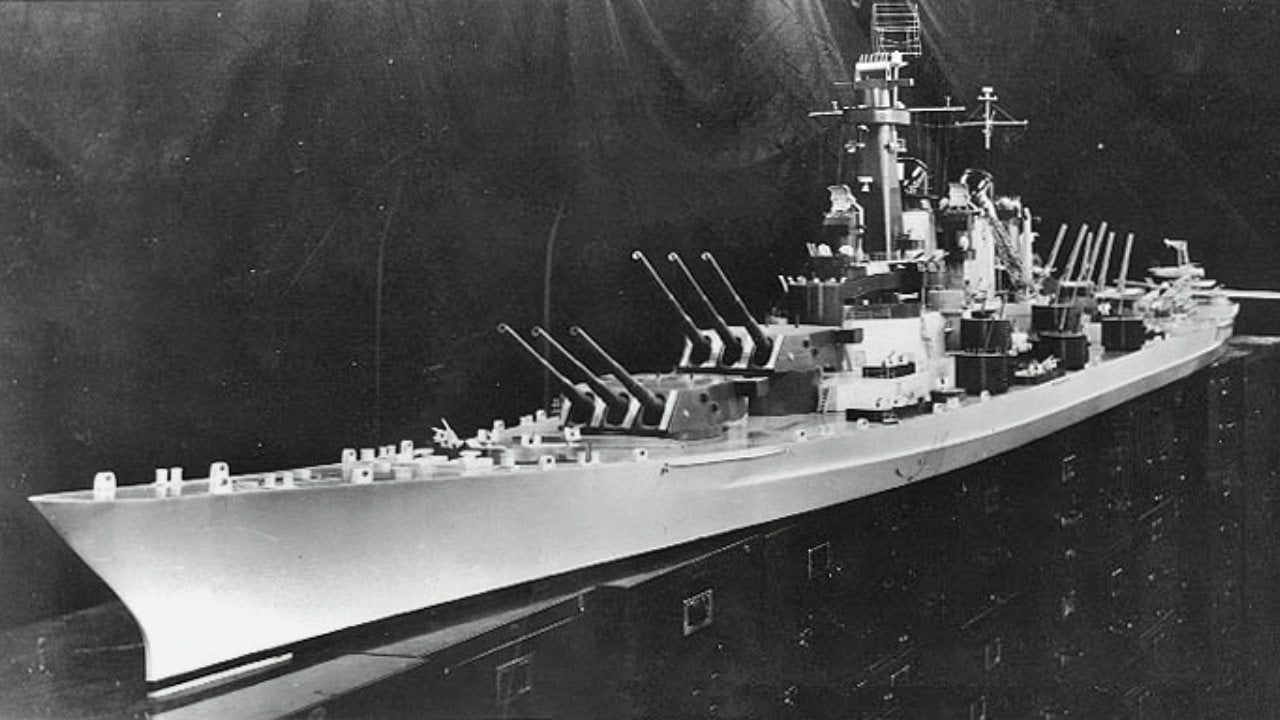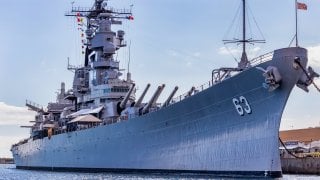Montana-Class Battleships: What the U.S. Navy Needs to Fight China?
The Montana-class battleship, planned as a successor to the Iowa-class during WWII, was never built due to the rising prominence of aircraft carriers in naval warfare.
Summary: The Montana-class battleship, planned as a successor to the Iowa-class during WWII, was never built due to the rising prominence of aircraft carriers in naval warfare.
-These ships would have been larger and more heavily armed than their predecessors but slower and more vulnerable.
-Modern naval conflict values speed and stealth, which would render the Montana-class ineffective today. With current geopolitical tensions in the Indo-Pacific and China's advanced defensive capabilities, the Montana-class, had it been constructed, would likely struggle to survive in modern combat situations, being easily detectable and targetable.
Why the Montana-Class Battleships Were Never Built and Wouldn't Survive Today
Recent advancements in naval warfare technology have emphasized the need for speed and stealth over brute strength—which is why the world’s navies no longer deploy battleships to hulk in traditional, static firing lines. The survivability and the effectiveness of the battleship in modern conflict are dubious; in all likelihood, the battleship would be poorly tailored toward contributing successfully in a modern conflict.
What about the Montana-class?
The last battleship class that the U.S. Navy ever built was the mighty Iowa-class. But the Iowa was not the last battleship class ever planned.
The Montana-class was a planned battleship, authorized for construction with the intention of succeeding the Iowa. But as World War II demonstrated, the battleship was losing primacy; the aircraft carrier was proving itself increasingly important to contemporary warfare. Accordingly, the Montana was deprioritized and ultimately canceled before ever having been built.
Now, however, as tensions build with China, and pundits question whether the U.S. Navy is adequately equipped for a confrontation in the Indo-Pacific, some are wondering whether something like the Montana-class would be an asset. Would the Montana-class be helpful in a modern conflict with an adversary like China? No. Probably not.
Designing the Montana
Multiple designs were proposed for what was slated to become the Montana-class. The designs varied but for one common denominator: the Montana would be large—larger in fact than the Iowa.
The Iowa, for her part, was not exactly small. Measuring 860 feet long and displacing 58,000 tons, the Iowa was a hearty ship. Yet, the Montana was meant to be bigger still. One design proposed a vessel measuring 860 feet long with a 64,500-ton displacement.
And to accompany the heft would have been considerable firepower—more than the Iowa. Indeed, where the Iowa carried nine 16-inch guns, the Montana would have carried twelve.
Would it have made a difference? Would the beefier Montana still be relevant today? No. The Montana would have been larger and more powerful than the Iowa, sure, but the Montana also would have been slower and more vulnerable. Modern naval conflict has placed a premium on speed and stealth.
The Montana would have featured the opposite characteristics: overt strength, hulking size, and plodding speed; the Montana would have been a sitting duck against the sophisticated naval defense technologies currently employed. Regardless of the design fundamentals, the Montana would be more than eighty years old today—far too old to be relevant in a modern conflict.
China is increasingly well prepared to contest American surface vessels in the Indo-Pacific. Xi’s forces have been stockpiling attack submarines, lithe surface vessels, aircraft carriers, modern aircraft, and intermediate-range and hypersonic missiles. In all, the Chinese will have a variety of options for addressing a U.S. naval presence in the Indo-Pacific.

The survival of U.S. forces would depend upon avoiding detection. Yet, something like the Montana would be detectable and targetable and would be at an acute risk in an environment featuring Chinese defensive capabilities.
The Montana would have packed an offensive punch. Even by modern standards. But the chances that the battleship would have survived a modern conflict against a sophisticated adversary seem low.
About the Author: Harrison Kass
Harrison Kass is a defense and national security writer with over 1,000 total pieces on issues involving global affairs. An attorney, pilot, guitarist, and minor pro hockey player, Harrison joined the US Air Force as a Pilot Trainee but was medically discharged. Harrison holds a BA from Lake Forest College, a JD from the University of Oregon, and an MA from New York University. Harrison listens to Dokken.


